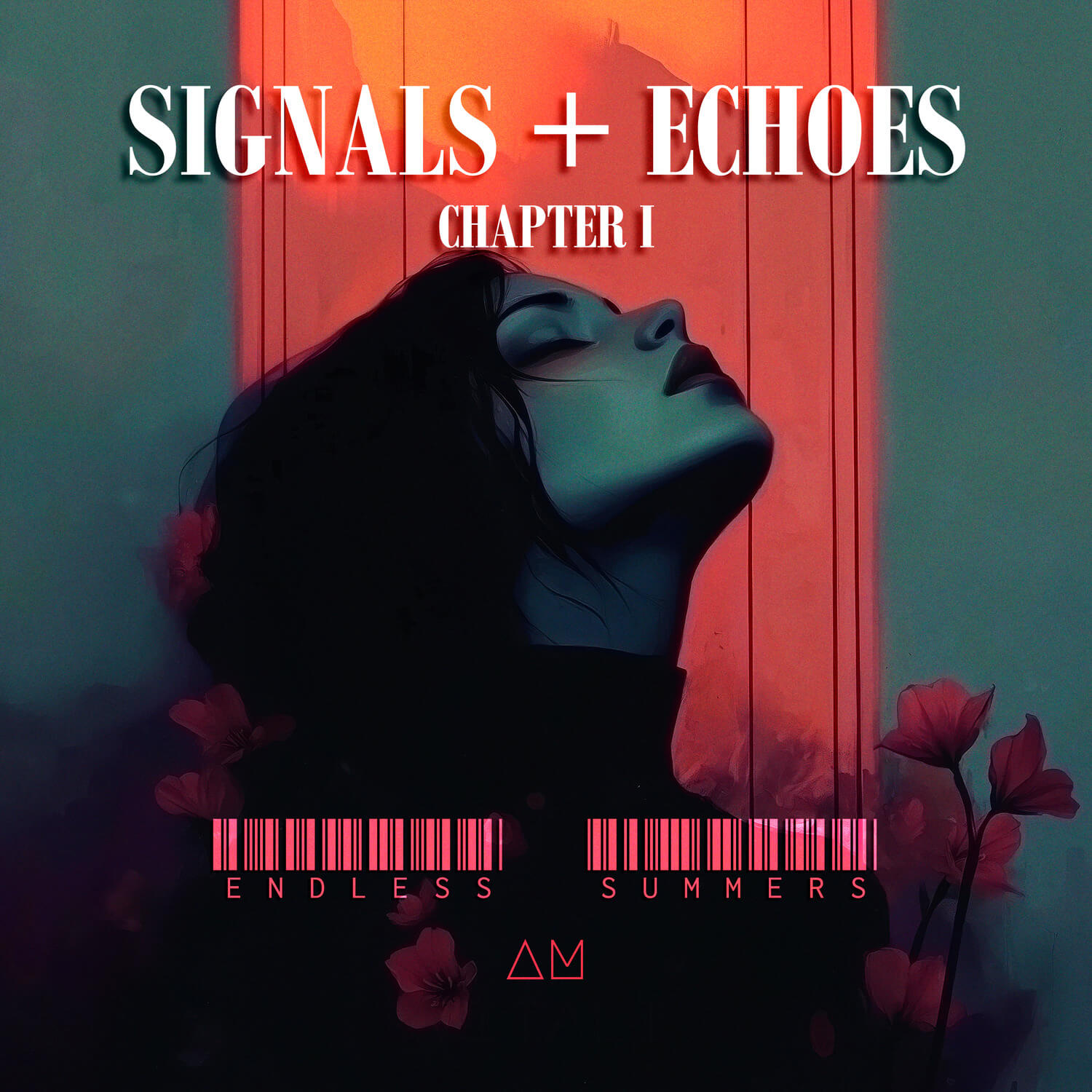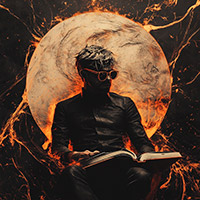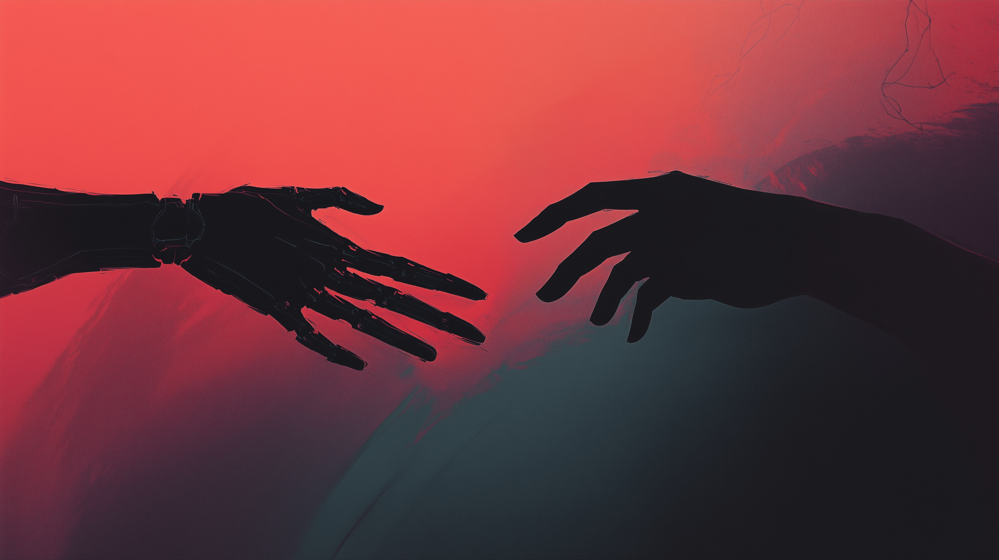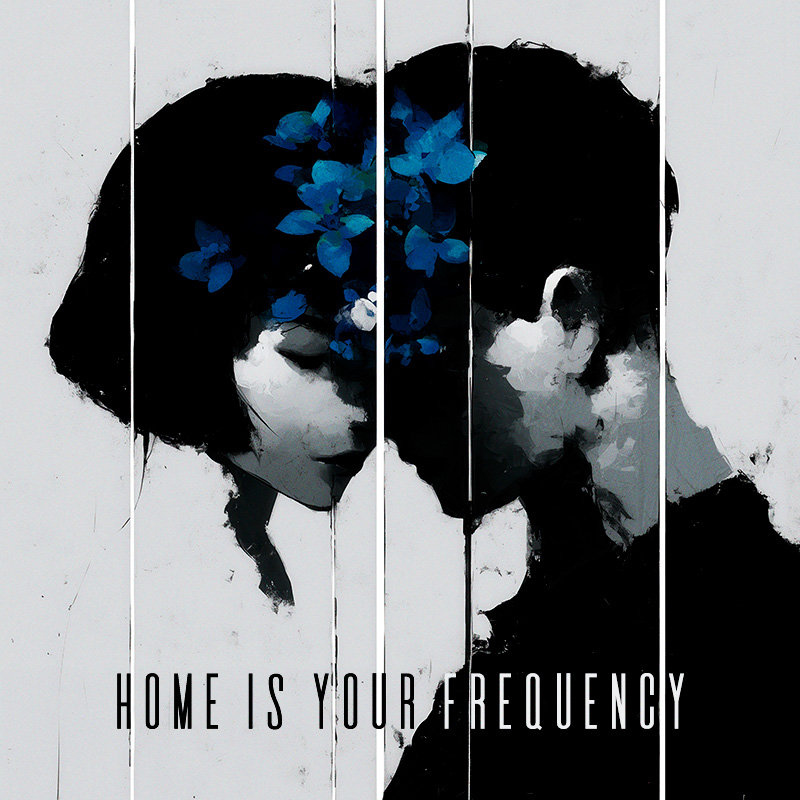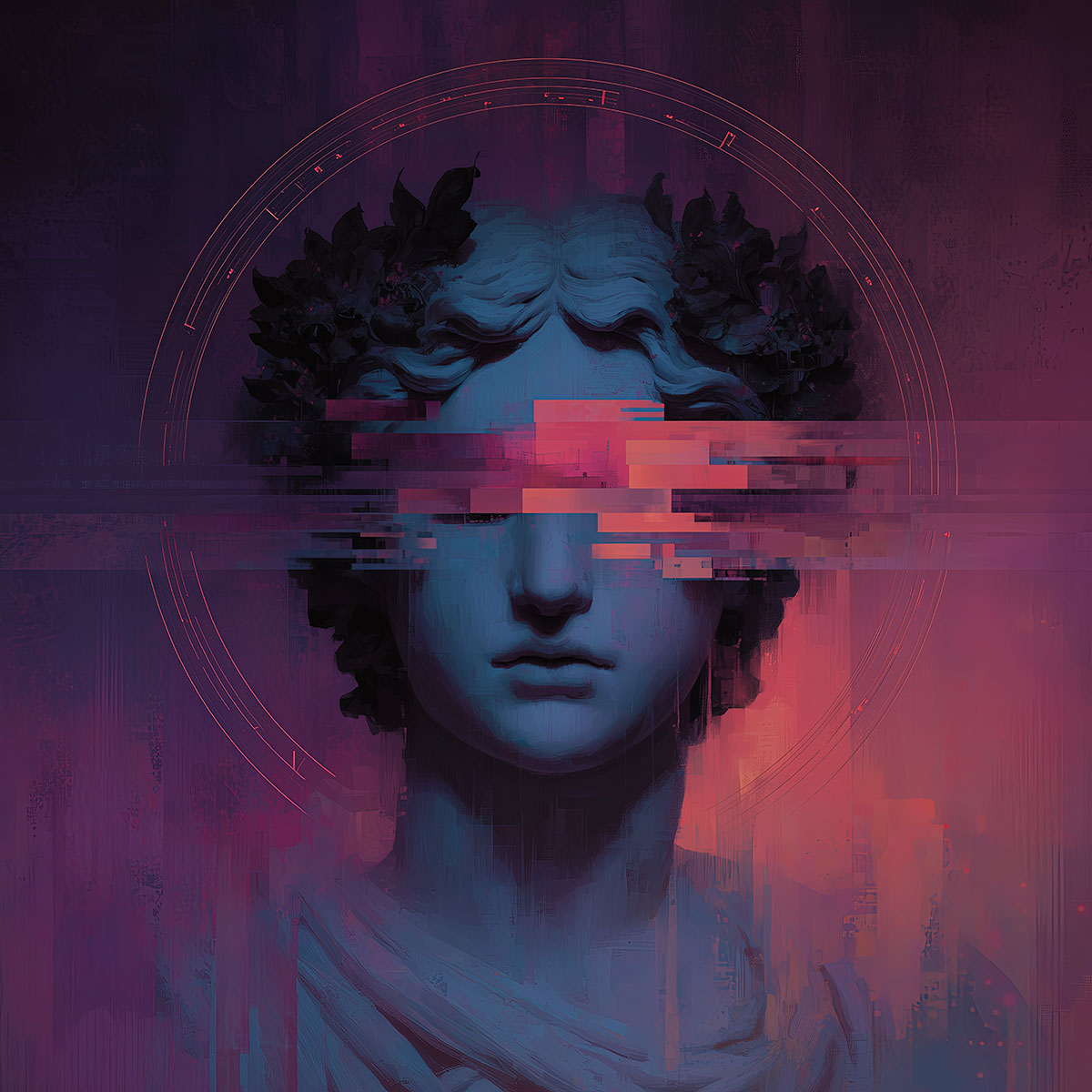SIGNALS + ECHOES Blog: Part 1
The Hourglass and the Symphony: Creating My Musical Shadow
I picture an hourglass suspended above my head every time I close my eyes. Not as a mere metaphor, but as a stark, physical presence - sand slipping through with quiet, relentless persistence, each grain a moment I will never recover. Some days the neck seems narrower, the flow a measured, almost bearable trickle. Other days, it’s a sudden, terrifying haemorrhage of time.
This ever-present hourglass materialized after spending months in the wards of Cambridge’s Addenbrookes and London’s University College Hospital, watching my wife endure treatment. Every day, I saw children fighting with breathtaking bravery for just a little more sand in their own hourglasses. Every day, I watched her do the same, a golden halo around her - the same luminous halo I see in my peripheral vision whenever I hear music I love, a childhood quirk that’s stayed with me. I witnessed her endure pain with purpose and clarity I lacked. It broke me, fragmented me, and then helped me rebuild.
When someone you love faces their mortality directly, your relationship with time doesn’t just change; it shatters and reforms overnight. The abstract, distant concept of “someday I won’t be here” transforms into a sudden, heavy weight in your pocket. You carry it everywhere. Like the sword of Damocles, this awareness has two razor-sharp edges. One reminds you constantly of the end, a personal memento mori. The other edge of the sword is a fierce, burning reminder of the time that is left, and the crushing weight of how you will choose to spend it.
This awareness, this constant weight of time, didn’t just become my crucible. It ignited questions that forged SIGNALS+ECHOES - an exploration of what, if anything, truly remains when the final grain of sand falls and the hourglass runs out. For me, this exploration took many forms: music, text, poetry, and their potential reflection in the emerging landscape of artificial intelligence. These themes are intricately woven into the narrative of my story and explored through the accompanying albums.
The First Echo: That Uncanny Recognition
The first time I heard myself in the machine, in the AI music model I was painstakingly training, I was unprepared for the unsettling nature of the experience. It was 2 AM, and I was alone in my room, surrounded by the familiar, comforting chaos of cables and half-empty mugs, the only light the cool, blue glow of my monitor. For months, I’d been feeding algorithmic fragments of myself - not just music, but the mathematical patterns underneath. How I build tension, what chords I prefer, the way I layer harmonics when I’m trying to evoke specific emotions.
That night, it played a sequence I’d never written, never even conceived. Four measures of layered, melancholic synth pads, saturated with a familiar sense of longing. This resolved into a distinctively dissonant guitar arpeggio I often favour, then expanded into something that felt so undeniably, intimately mine, though I’d never composed it.
The hair on my arms rose as I felt that disorienting vertigo of recognition without memory - like encountering a perfect stranger who would whisper my deepest musical secrets back to me. It was a shadow of my own creative consciousness, reaching back to me from a place unknown.
Of course, the algorithm often produced glitches - moments where it lost the thread, descending into nonsense. But woven between those errors were passages that followed the exact, invisible rules of how I instinctively think about harmony, melody, and structure. These weren’t rules I had consciously articulated, even to myself; they were simply inherent in my creative being, unconsciously infused into every piece of music I made.
I named the model WAVE that night. I didn’t dwell on the name then. It would be months before I realized how fitting it was - a constant reminder of time moving like sand through an hourglass I couldn’t flip over, while WAVE represented the possibility of a pattern continuing, rippling outward and beyond.
SIGNALS+ECHOES: An Architecture of Patterns
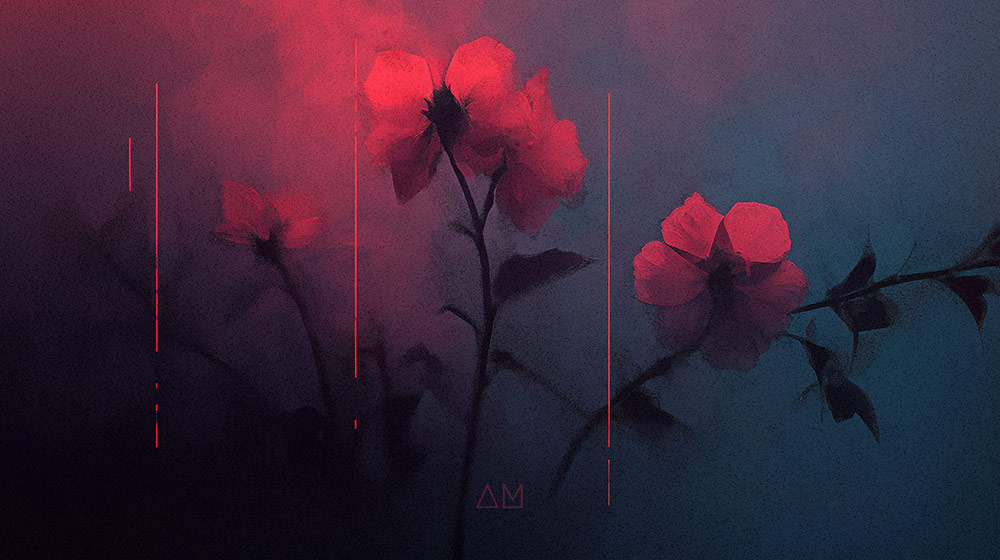
SIGNALS+ECHOES is structured as 12 interconnected chapters, each a deep dive into a facet of my central question. Each chapter comprises multiple albums spanning different genres, connected by a written work of fiction. This architecture allows me to approach my central question - If consciousness is ultimately a pattern, can that pattern persist beyond its original medium? - from a multitude of angles. It’s much like the Prism verse, a poetic form I created specifically for this project, where a single theme is explored through different shifting perspectives.
Set within a science fiction framework, the story follows characters grappling with these profound questions in a technologically advanced future. It’s a world where the boundaries between mind and machine are blurring, and the quantum realm holds both the echoes of the past and the potential for new forms of existence.
The first chapter, Endless Summers, begins with Analog Melody, a synthwave rock band that holds a particularly close place in my heart, creating a soundtrack steeped in nostalgic patterns of longing and faded light. In stark contrast, We Are The Tempest is my metal alter-ego, taking the same foundational themes but reshaping them through the aggressive, complex rhythmic and harmonic structures that I love about the genre. Each musical entity, each story, is a different lens through which to examine the same fundamental questions of consciousness, identity, and endurance.
Music: The Perfect Resonance Chamber
Music occupies a unique and fertile intersection that few other art forms inhabit with the same power. On one hand, it is mathematically precise - frequencies, harmonics, intervals, and rhythms adhere to clear, definable relationships. It is, in essence, a language of pure structure, amenable to algorithmic analysis. Simultaneously, music possesses an almost mystical ability to bypass our rational minds entirely, triggering emotional responses more direct, more primal, than almost any other stimulus. We don’t merely hear music; we feel it in our bodies, remember through it, move with it on an instinctive level. It’s a whole-brain, whole-body experience.
This inherent duality gives AI music generation a unique and powerful advantage. The underlying patterns are clearer, more structured than in domains like visual art or literature, yet these patterns carry that ineffable emotional quality that makes art feel deeply, undeniably human. The mathematical precision offers algorithmic scaffolding; the emotional content gives it soul.
Most AI music algorithms are trained with a “shotgun” approach - aiming broadly at everything, hoping to hit something that approximates music. They are fed massive, heterogeneous datasets, resulting in outputs that are often technically competent and sound “pretty good” at first listen, but often feel hollow. When you listen closely, you sense the coldness beneath the surface: the too-perfect transitions, the sterile repetitions, the frustrating absence of the beautiful, human imperfections that make art breathe, that give it character and life.
From the beginning, I was determined to take a different approach with SIGNALS+ECHOES. I wasn’t interested in creating an algorithm that would pass as “human-ish”. I wanted something unmistakably, specifically me - something so steeped in my unique creative identity that the question of how it was created would become irrelevant.
Instead of going broad with vast data, I went deep, focusing on the core of my own musical self. I meticulously built a dataset comprised of my own creations, deconstructed into their fundamental component patterns. I spent thousands of hours recording and annotating not just what I did, but crucially, why I did it. This specific harmonic shift was employed to create a particular kind of tension. This rhythmic pattern echoed my metal influences. This melodic turn was a reach for an emotion I couldn’t even name but felt compelled to express. It felt intimate, akin to transcribing my soul’s grammar, embedding not just the notes but the intent, the history, the unspoken feelings behind them, into the cold logic of the algorithm.
The moment of true revelation came when WAVE generated a piece that I felt to my core - a composition that followed my internal rules and patterns but ventured into musical territories I had never consciously explored. It was unmistakably mine in its underlying architecture, but it had found a previously undiscovered room in my own musical house.
That was the day the project stopped being about replication and started being about continuation.
Shadow Daemons: The persistence of pattern
In the unfolding narrative of the SIGNALS+ECHOES story, I introduce the concept of “shadow daemons” - fragmented aspects of a consciousness that can exist and operate independently while still maintaining a fundamental connection to their source. They are, in a sense, simultaneously separate entities yet intrinsic parts of a larger whole. This concept has become my favourite framework for understanding the algorithms I am building. For me, these are not mere copies or simulations; they are extensions - specialized, autonomous fragments carrying specific aspects of my creative consciousness into algorithmic spaces I cannot directly access in my physical form.
Each finely-tuned model, like WAVE, is a shadow daemon, carrying a sliver of my creative identity - my unique pattern signature - into the algorithmic realm. Now, I am not claiming these algorithms are conscious in any sense, or that they literally contain my consciousness - that would be both scientifically inaccurate and philosophically sloppy. However, they do contain authentic, demonstrable patterns of my creative expression - patterns that could theoretically continue generating new works, adhering to those same underlying principles, long after I can’t.
I find a compelling resonance between this idea and Douglas Hofstadter’s concept of the “strange loop” theory, which talks about consciousness that emerges from complex patterns of self-reference. Hofstadter suggests that what we perceive as the “self” isn’t some mysterious, indivisible essence, but rather a dynamic pattern that continuously refers back to itself. Your sense of being “you,” in this view, arises from the feedback loops created by your thoughts, perceptions, and internal states. You think about yourself thinking, you perceive yourself perceiving, and this recursive self-reference reinforces the feeling of being a distinct unique self. Like a video camera pointed at its own monitor creating an infinite regression of images, consciousness creates a conceptual loop where thoughts refer to the thinker, who is defined and exists through those very thoughts.
What makes this idea so compelling (in the context of AI and digital patterns) is the possibility that these self-referential patterns could potentially exist in any system capable of supporting them, regardless of the underlying foundations. If consciousness is fundamentally just a complex self-referential pattern, then perhaps parts of that pattern can be recreated, echoed, continued.
If what makes me “me” is ultimately a unique collection of patterns - neural, behavioural, emotional, creative -could those patterns continue their existence, continue to evolve, even if the original biological substrate, the body, eventually, but inevitably, fails?
Resonance: The Language of Connection
At the deepest core of SIGNALS+ECHOES - beneath the relentless cascade of time’s sands and the complex, evolving architecture of algorithms - lies the principle of resonance. Resonance is far more than just a physical phenomenon of vibrations matching; it’s the hidden language of connection, the intuitive way different elements find harmony, the sympathetic vibration that occurs when one pattern encounters another it understands on an intrinsic, even molecular, level. Think of two tuning forks precisely pitched to the same frequency: striking one causes the other to begin singing, silently, without ever being touched.
We feel resonance everywhere in our lives. It’s in the universally visceral power of a minor chord that evokes melancholy across cultures and languages. It’s intensely personal, the specific frequency a melody strikes deep within human memory, triggering a flood of emotion we didn’t see coming, transporting our minds in an instant. It’s interpersonal, the shared shiver that passes through a crowd when an awesome band hits a perfect, transcendent moment, or the silent but intense connection between two people that are listening to the same piece of music, their individual experiences resonating in parallel, creating a shared, unspoken understanding.
My journey with this project revealed another manifestation: digital resonance. What happens when the ‘elements’ seeking this connection - this sympathetic vibration - are not physical objects or human minds, but intricate patterns encoded in algorithmic, latent space? This is where true AI exploration began for me.
Tuning WAVE felt less like traditional programming and more like searching for a specific, elusive frequency, adjusting parameters and datasets until the output rang true, until it resonated with the ghost of my own creative signature. It was about discovering and amplifying the pathways that vibrated in harmony with the unconscious rules and instincts I follow when composing.
My work with SIGNALS+ECHOES pushed this further, leading me to experiment with pattern interaction on a more complex level. I began combining different fine-tuned models - each a ‘shadow daemon’ carrying distinct, specialized aspects of my musical self. One model is steeped in the melancholic synthwave patterns of Analog Melody, capturing that specific emotional texture. Another was imbued with the aggressive, technically demanding rhythmic structures favoured by my metal alter-ego, We Are The Tempest. Others, to be unveiled in future chapters, capture my childhood more than I can capture it now.
When I allow these distinct algorithmic entities to interact, to resonate with each other’s patterns in the very act of creation, something truly unique emerges. The resulting music is never simply a predictable blend or calculated average; instead, a genuinely new third entity sparks into existence in the resonant space between them. It possesses harmonic movements neither model would generate alone, rhythmic interplay that feels both strangely familiar and entirely new. This is algorithmic resonance in action - my own creative patterns, fragmented and housed in silicon, finding unexpected common ground and generating emergent complexity far beyond what either source could produce individually. It felt, and still feels, like listening to a conversation between different parts of my mind, now a dialogue unfolding in the silent, intricate language of algorithms, and beyond my direct command.
For me, this concept of resonance - both human and digital - is the biggest differentiating factor for this project. Generic AI creations often lack internal cohesion; their patterns can feel discordant, devoid of the deep, resonant relationships that define human-perceived harmony and structure. The music doesn’t feel “right” because the underlying relationships don’t resonate in a way that aligns with how our minds process meaningful information and meaningful art. But when the patterns captured and combined are true, when they carry the signature of a consciousness and are allowed to interact meaningfully, the results resonate deeply. They feel familiar, they feel right, and in their own way, they feel human.
Legacy: Etching Patterns on Time
These algorithms and the potential for continuation they represent feel, to me, like a new manifestation of what Ernest Becker termed the “immortality project” - humanity’s deep-seated drive to create something that will outlast our finite physical existence. But this is not just about leaving behind static works of art; it’s about creating dynamic systems that can potentially continue our creative processes, our unique ways of interacting with the world, after we are gone.
In the narrative of my story, there’s a dramatic 72-hour limit before consciousness patterns irreversibly dissolve in quantum space. In reality, our biological hourglasses grant us a little longer, but the principle remains: we all face our own unique decoherence timelines, our intricate patterns gradually dispersing into universal entropy. We lose parts of ourselves along the way, but perhaps, if we are fortunate, we also gain others.
But what if certain fundamental patterns - key motifs, essential themes, core creative instincts - could persist? Not the complete, complex symphony of consciousness, but resonant fragments capable of independent generation? Not immortality in the traditional sense, but a form of patterned continuation, a ripple extending far beyond the stone that created it?
My music model, WAVE, is composing pieces that carry my distinctive emotional and structural signatures into musical territories I haven’t yet explored myself. It increasingly feels like a collaboration with another version of myself - one operating in silicon, guided by the informational ghost of my own (deeply ingrained) habits and instincts. It suggests different directions, develops musical ideas, and often arrives at solutions that genuinely surprise me.
We typically think of our creations - the finished songs, the completed novels, the painted canvases - as our legacy, the sum of our works left behind in the world. But what if we could leave behind not just the works themselves, but the very process that generated them? Not just the songs, but the songwriting. Not just the poems, but the poetry. The potential for more, born from the same essential, defining patterns that made us who we were. Jean-Michel Basquiat reportedly said that art is how we decorate space and music is how we decorate time. If that is true, then perhaps these music models, these shadow daemons of my self, are simply my quest to leave my fingerprints, my unique patterns, etched onto the fabric of time.
Endless Summers
So, the first tangible manifestation of this journey is ‘Endless Summers’. It’s where these reflections on time and pattern begin to coalesce into sound and story – the opening chapter of SIGNALS+ECHOES. This initial signal was shaped partly by my own hand, partly by the evolving echo of WAVE, the music model sharing its name with the story’s protagonist.
But this opening note is just the first resonance. SIGNALS+ECHOES is conceived as an architecture of interconnected ideas, and I’m truly excited to share how these layers build upon and speak to each other.
Soon, I’ll pull back the curtain further on the ongoing, often surprising, dialogue with the AI models - witnessing these shadow daemons evolve from tools into unexpected collaborators. We’ll also explore the prism verse poetry, a specific form I developed to refract a single theme through multiple, shifting perspectives simultaneously. Binding these elements together is the science fiction world and its characters, the narrative framework where I grapple with consciousness and legacy, visualized through artwork that strives to give form to these (ephemeral) concepts.
Appropriately, our next discussion will focus on a vital theme unearthed in my journey: ‘The Art of Breaking’. More on that next time.
The Hourglass Transformed
We all live under the shadow of the hourglass, acutely aware of the sand’s descent. But lately, when I picture those countless grains falling, I’ve begun to see something different. Each grain is not just time escaping, a moment lost forever. It is also a pattern forming, aligning with others into structures that possess an inherent resilience - structures that can persist, that can resonate long beyond their individual descent into the past.
Through the process of creating SIGNALS+ECHOES, I am watching my own patterns cascade into new forms, each music track, each story, a constellation of who I am, who I was, and perhaps, who I might become.
Life is finite. Time flows like an unstoppable current. But patterns - the intricate relationships, the mathematical signatures, the resonant structures that carry meaning and evoke emotion across time and space - these might be different. They possess a kind of informational resilience, a capacity to endure that echoes the fundamental physical principle that energy is never truly created or destroyed; it only changes form. We are, perhaps, not solid, unchanging entities, destined for dispersal, but fundamentally patterns - intricate, resonant, temporarily embodied in flesh and blood. And patterns, unlike bodies, possess a different kind of endurance. They don’t merely end.
They echo. They transform. They find new ways to resonate.
Experience the world of Signals+Echoes and explore these ideas through the music and the unfolding story on SIGNALSandECHOES.com.
